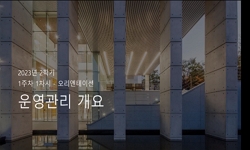문화재를 법률에 따른 문화재로 지정・등록하는 것은 문화재로서의 가치를 안정적으로 보전하기 위함이다. 문화재 지정・등록은 그 문화재를 보호하는 데 필요한 가장 기본적인 수단이라...
http://chineseinput.net/에서 pinyin(병음)방식으로 중국어를 변환할 수 있습니다.
변환된 중국어를 복사하여 사용하시면 됩니다.
- 中文 을 입력하시려면 zhongwen을 입력하시고 space를누르시면됩니다.
- 北京 을 입력하시려면 beijing을 입력하시고 space를 누르시면 됩니다.
https://www.riss.kr/link?id=A109064022
- 저자
- 발행기관
- 학술지명
- 권호사항
-
발행연도
2024
-
작성언어
Korean
-
주제어
문화재 ; 지정 ; 보전 ; 관리 ; 법전리사지 ; 국립공원 ; Icultural property ; designation ; preservation ; management system ; Beopjeon-ri Buddhist temple site ; national park
-
KDC
605
-
등재정보
KCI등재
-
자료형태
학술저널
-
수록면
143-169(27쪽)
- DOI식별코드
- 제공처
-
0
상세조회 -
0
다운로드
부가정보
국문 초록 (Abstract)
문화재를 법률에 따른 문화재로 지정・등록하는 것은 문화재로서의 가치를 안정적으로 보전하기 위함이다. 문화재 지정・등록은 그 문화재를 보호하는 데 필요한 가장 기본적인 수단이라고 할 수 있다. 이에 비추어 전국적으로 5,700개소가 넘게 조사된 폐사지들은 대부분 아직 문화재로 지정 또는 등록되지 못하여 안정적인 보호 기반을 갖추지 못하고 있다. 그 가치를 분명하기 확인하지 못한 폐사지가 많기 때문이다.
경북 성주군 가야산에 있는 법전리사지(法田里寺址)에서는 발굴조사를 통해 석탑과 석조연화대좌, 용과 보살 등을 새긴 부조상 등 유물이 출토되었고 폐사 전 가람 배치도 드러났다. 이 폐사지의 문화재 가치는 소재하고 있는 석조문화재와 발굴조사로 출토된 명문 기와를 통해 알 수 있다. 우선 석탑과 석조연화대좌는 그 양식에 비추어 통일신라 시대에 해당하는 8~9세기에 조성된 것으로 볼 수 있고, 용・보살・나한 등을 새긴 부조상들은 정성을 기울여 정교하게 만든 가치가 큰 것들이다. 특히 부조상들은 다른 곳에서는 비슷한 사례를 찾기 어려운 것들로 ‘문화적 다양성’ 관점에서 그 가치를 더욱 높게 볼 수 있는 것들이다. 이와 함께 ‘만세갑사(万歲岬寺)’라는 명문이 새겨진 기와편은 폐사되기 전 이 터에 있었던 사찰의 성격을 알아내는 데 의미 있는 단서가 될 수 있다. 명문은 연구를 통해 문화재로서의 가치를 밝히는 데 귀중한 자료가 될 가능성이 높다.
문화재로서 법전리사지를 보전하는 데 가장 먼저 할 일은 문화재 지정을 통해 법적 보호 대상이 되게 하는 것이다. 그리고 성주군과 가야산국립공원 간 협력, 지역민과 지역 민간단체의 참여 등을 통해 법전리사지와 소재 문화재들을 현장에서 보전・관리하는 체계를 갖출 때 법전리사지는 문화재로서의 가치를 효과적으로 이어나갈 수 있다. 구체적으로, 성주군과 가야산국립공원사무소이 지역주민들에게 문화유산에 관한 교육 기회를 마련해주고, 교육을 이수한 주민들은 법전리사지를 포함하여 가야산국립공원 문화재를 관리하고 보호하는 활동에 참여하는 것이다. 이와 함께 지역 주민들로 구성된 문화재지킴이 단체가 형성되도록 지원하는 것도 바람직한 문화재 보전・관리 방법이 될 수 있다. 이처럼 지역 주체들의 노력을 통해 현장을 중심으로 한 법전리사지 보전・관리체계를 구축하는 것은 문화재 보호에 지역 주민이 주도적으로 참여한다는 점에서 의미가 큰 일이다. 이렇게 해서 안정적인 문화재 보전・관리체계를 확립할 때 문화재 활용을 통한 가치 확산도 모색해 볼 수 있을 것이다.
다국어 초록 (Multilingual Abstract)
Designating and registering cultural heritages as cultural properties in accordance with the law are to stably preserve their value as cultural heritages. Designation and registration of cultural properties can be said to be the most basic means neces...
Designating and registering cultural heritages as cultural properties in accordance with the law are to stably preserve their value as cultural heritages. Designation and registration of cultural properties can be said to be the most basic means necessary to protect them. In light of this, most of the Buddhist temple sites, which have been surveyed at more than 5,700 locations nationwide, have not yet been designated or registered as cultural properties, so they do not have a stable protection foundation. This is because there are many temple sites whose value has not been clearly confirmed.
At Beopjeon-ri Buddhist Temple Site in Mt. Gaya in Seongju-gun, North Gyeongsang Province, excavations have uncovered relics such as stone pagoda, stone lotus pedestal, and statues engraved with dragon and Bodhisattva, and arrangement of buildings before the temple was closed. The value of cultural properties of the temple site can be found through the stone cultural properties in which it is located and the a roof tile carved with letters through excavation. First of all, the stone pagoda and stone lotus pedestal can be seen to have been constructed in the 8th and 9th centuries corresponding to the Unified Silla period in light of their style, while the statues engraved with the dragon, Bodhisattva, and arhats are of great value carefully crafted. In particular, similar examples of statues are hard to find elsewhere, and their value can be appreciated from the perspective of cultural diversity. At the same time, the roof tile piece inscribed with the inscription “万歲岬寺(man-se-gap-sa)” can be a meaningful clue to discovering the nature of the temple that was located on the site before its close. The inscription is likely to be a valuable resource for revealing its value as a cultural heritage through research.
The first thing to do in preser ving the temple site as a cultural property is to be subject to legal protection through the designation of cultural property. In a ddition, through cooperation between Seongju-gun and Gayasan National Park Office, and the participation of local residents and local private organizations, the temple site can effectively maintain its value as a cultural property when it is equipped with a system to preserve and manage the heritage in the field. Seongju-gun and the Gayasan National Park Office provide educational opportunities for local residents on cultural heritage, and residents who have completed education course participate in activities to manage and protect cultural properties in Gayasan National Park, including the Beopjeon-ri temple site. It can also be a desirable way to preserve and manage cultural properties by supporting the formation of a cultural heritage protection group composed of local residents. The establishment of a system for preservation and management of the heritage centered on the temple site through the efforts of local actors is significant in that local residents take the lead in protecting cultural properties. In this way, it will be possible to explore the spread of value through the utilization of cultural properties when establishing a stable cultural heritage preservation and management system.
동일학술지(권/호) 다른 논문
-
인생경계 반영으로서의 예술 : 그림자를 중심으로 살펴보는 허실(虛實)의 미학적 표현 연구
- 동서미술문화학회
- 서은애(Seo, Eun-Ae)
- 2024
- KCI등재
-
- 동서미술문화학회
- 김행지(Kim, Haeng-Ji)
- 2024
- KCI등재
-
현대인의 욕망에 대한 판타지적 표현연구 -본인의 작품과 교육사례를 중심으로-
- 동서미술문화학회
- 서기환(Seo, Gi-Hwan)
- 2024
- KCI등재
-
기억의 반추와 자기해소의 조형적 표현 -연구자 작품분석을 중심으로-
- 동서미술문화학회
- 이지희(Lee, Ji-Hee)
- 2024
- KCI등재





 DBpia
DBpia






